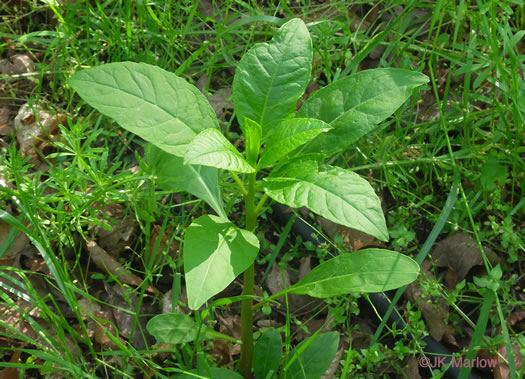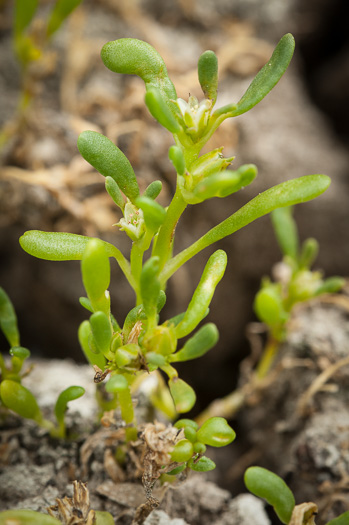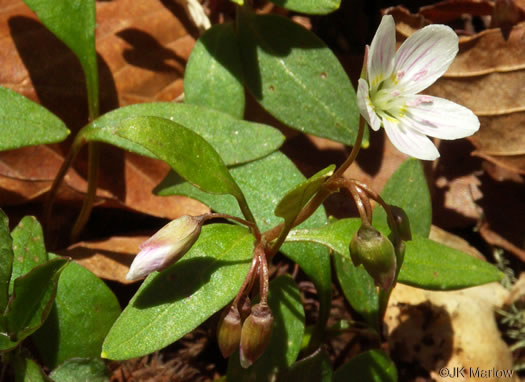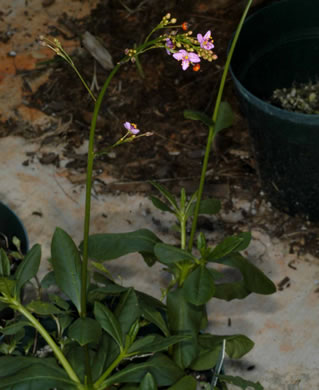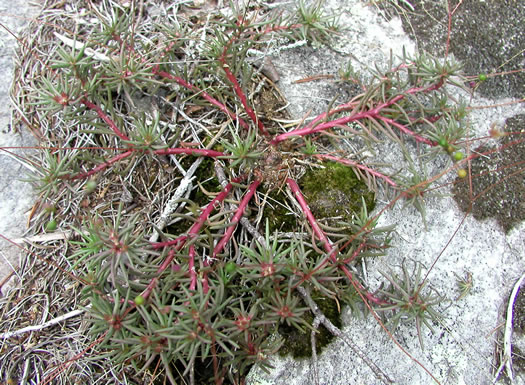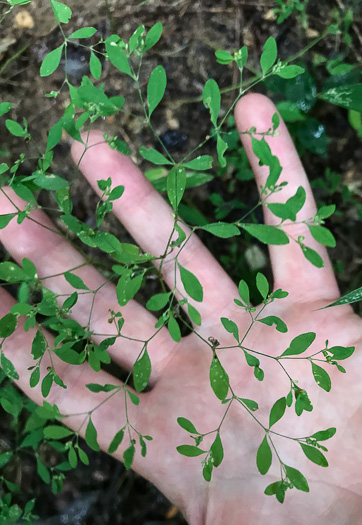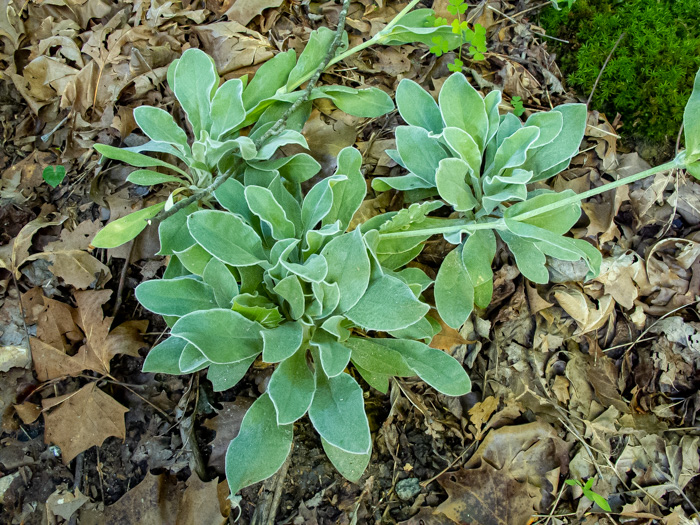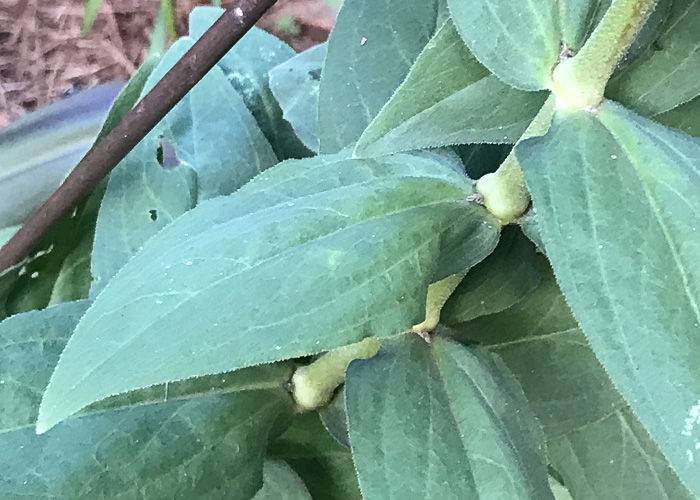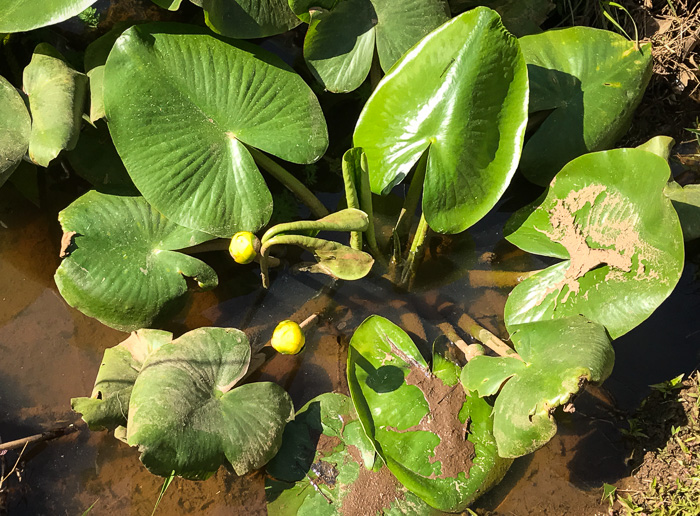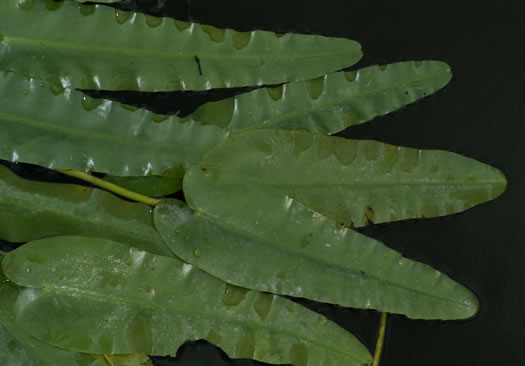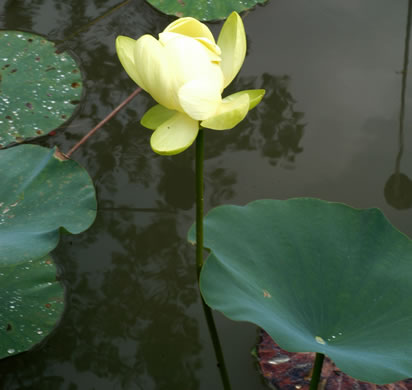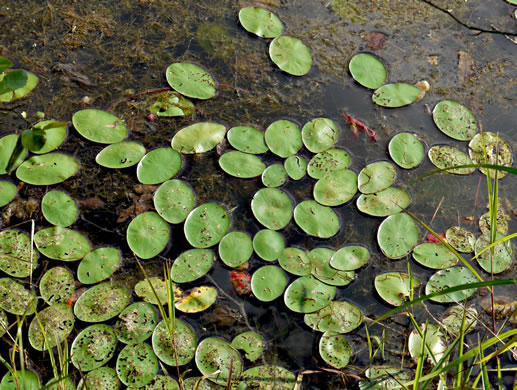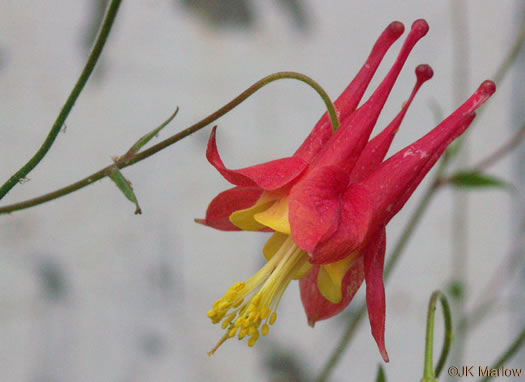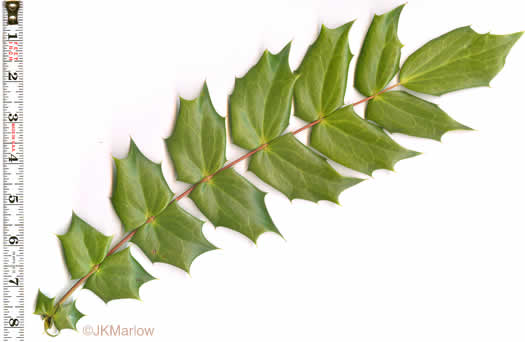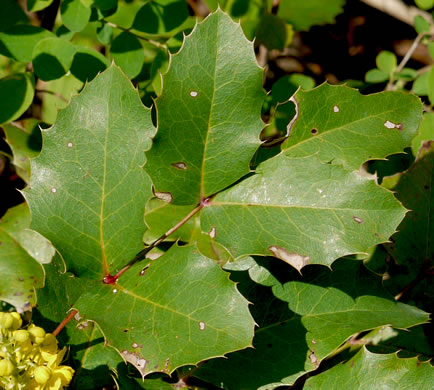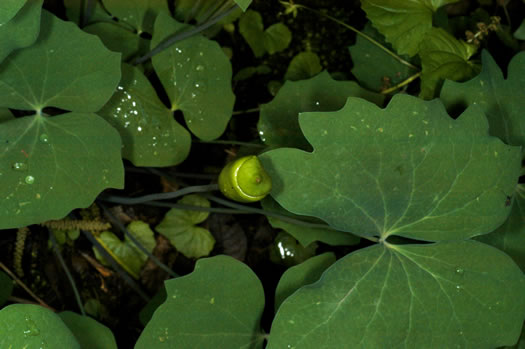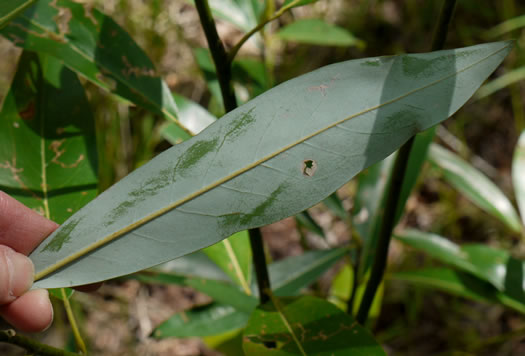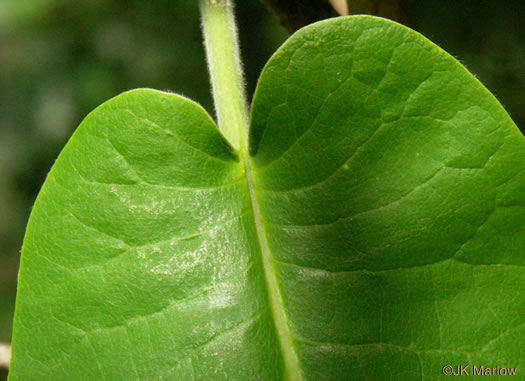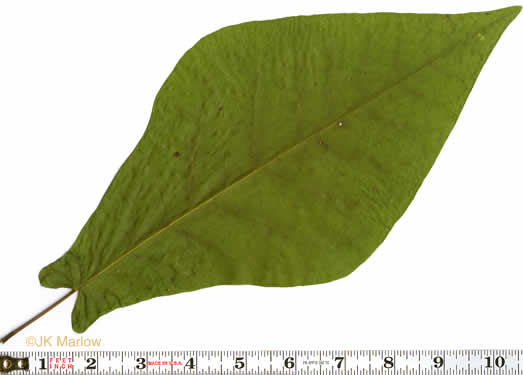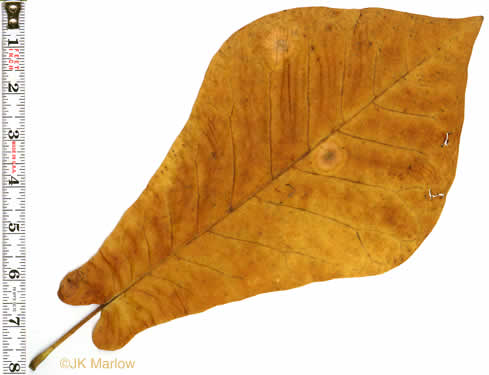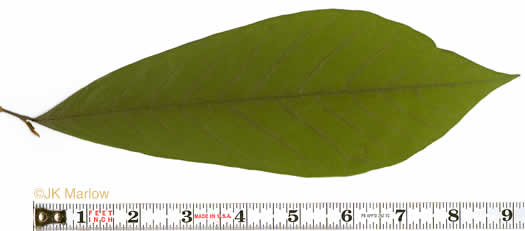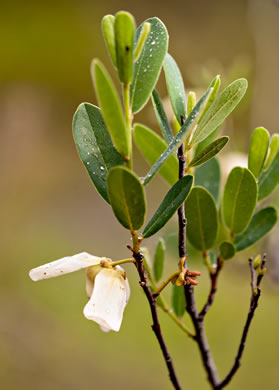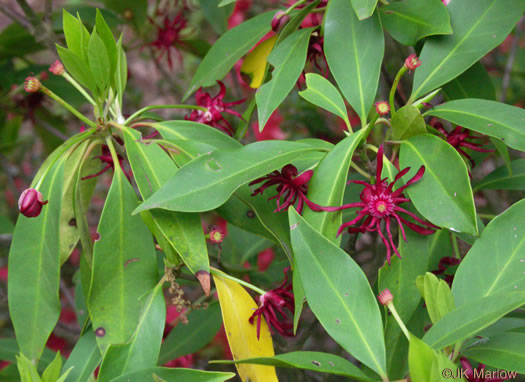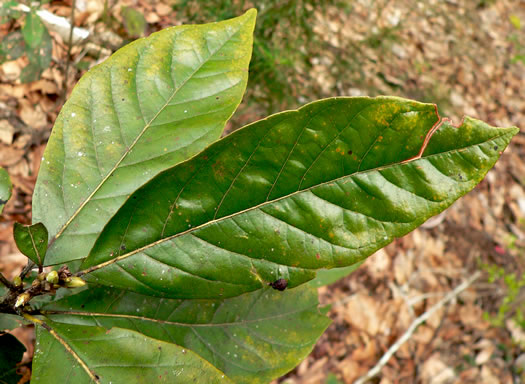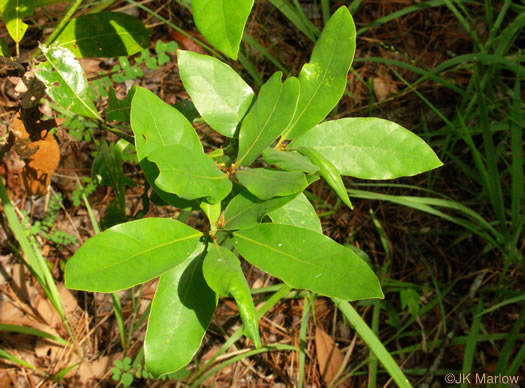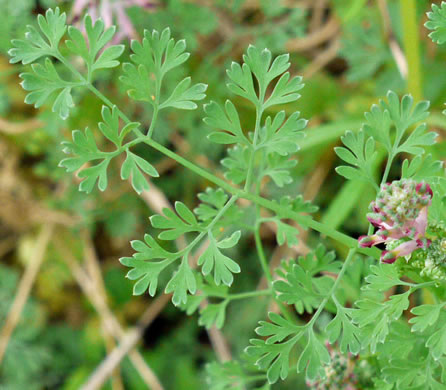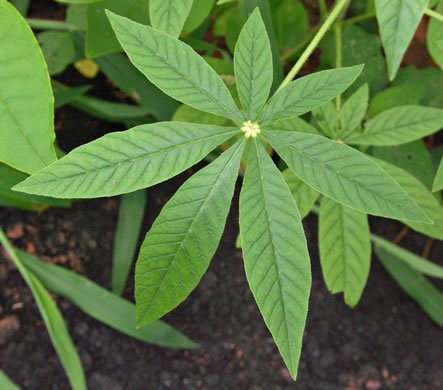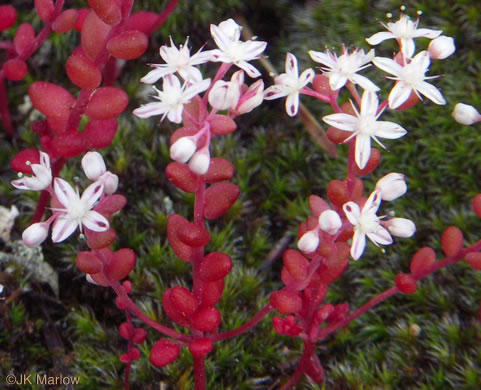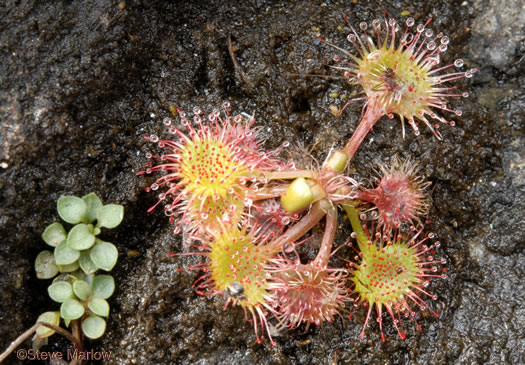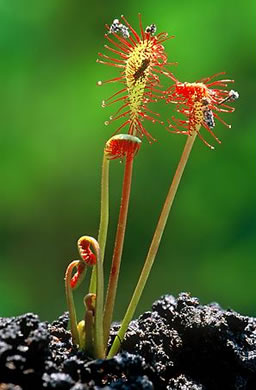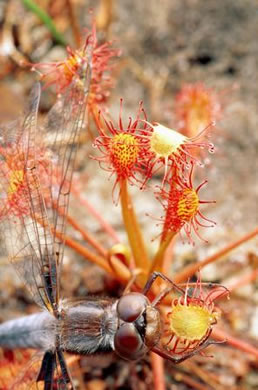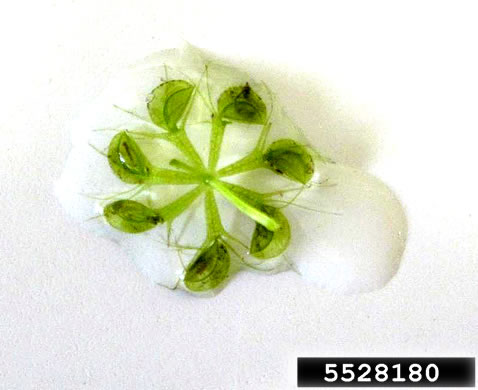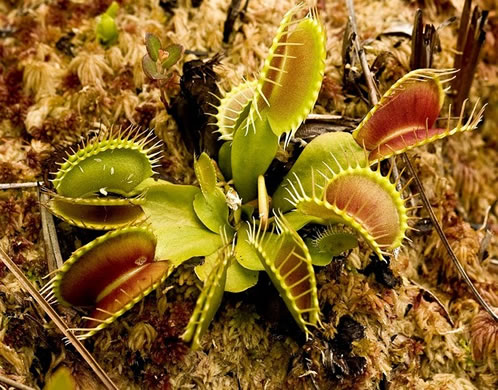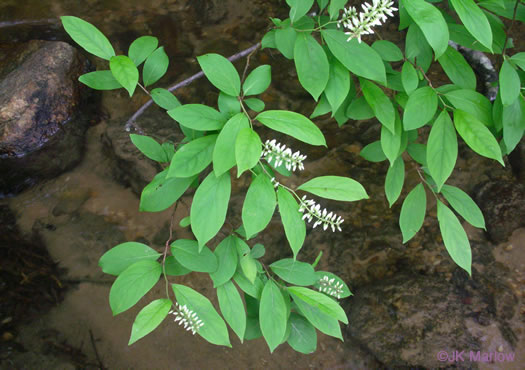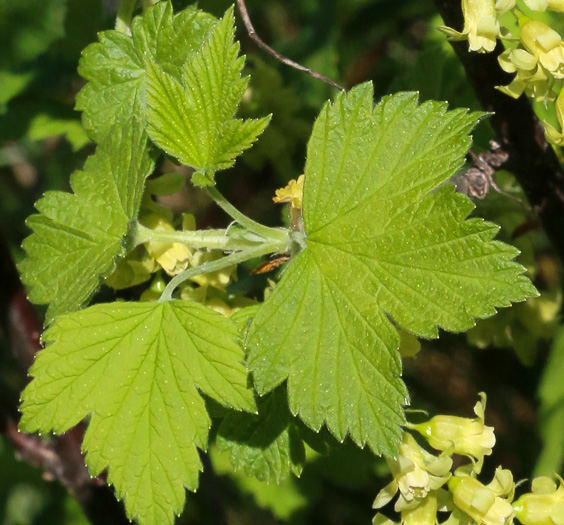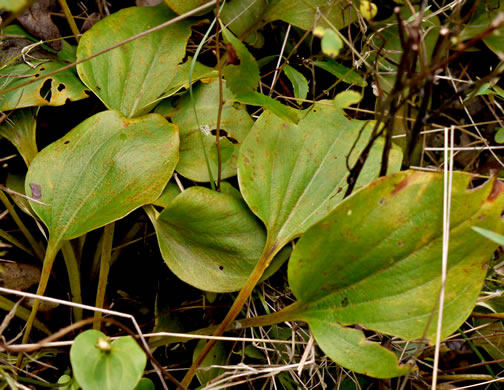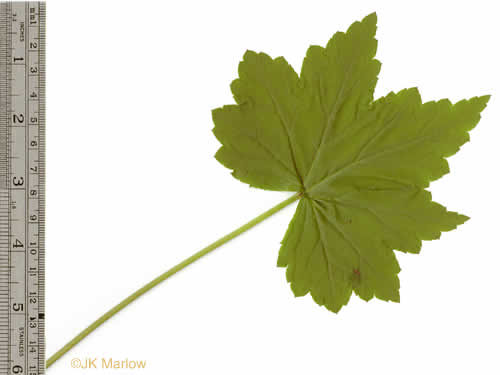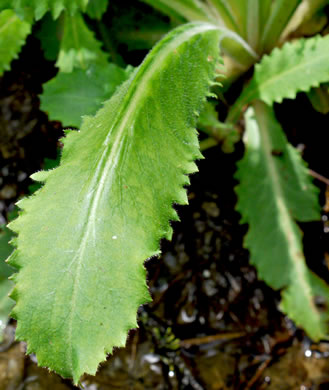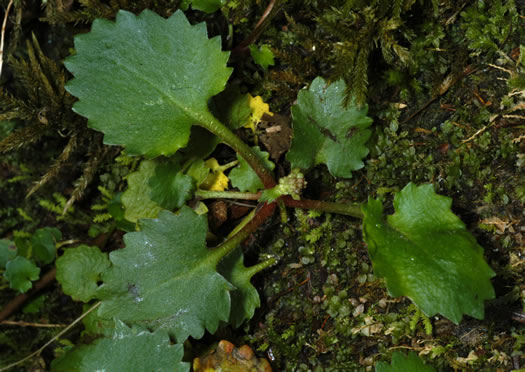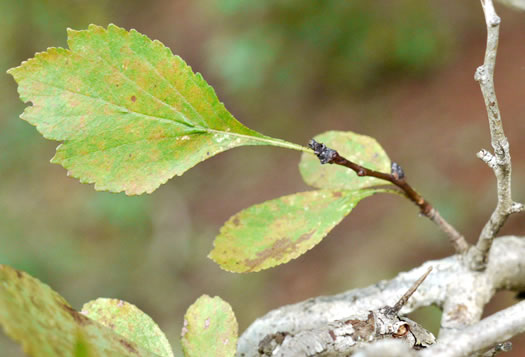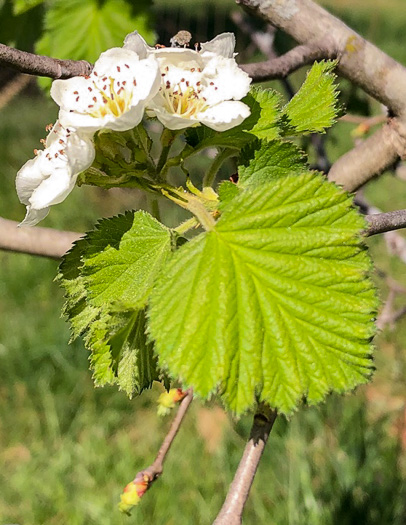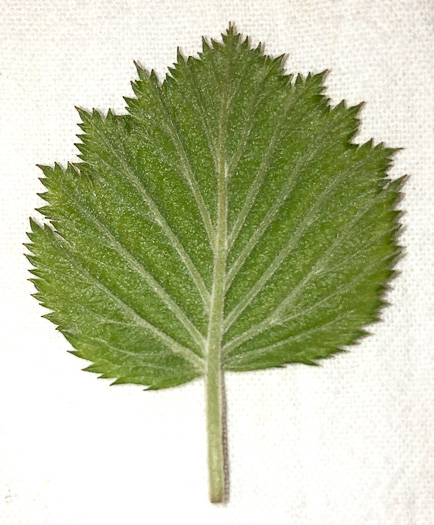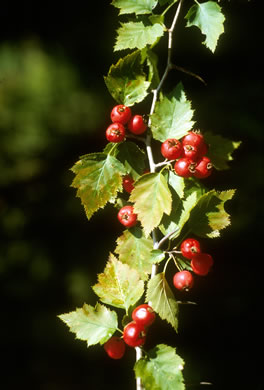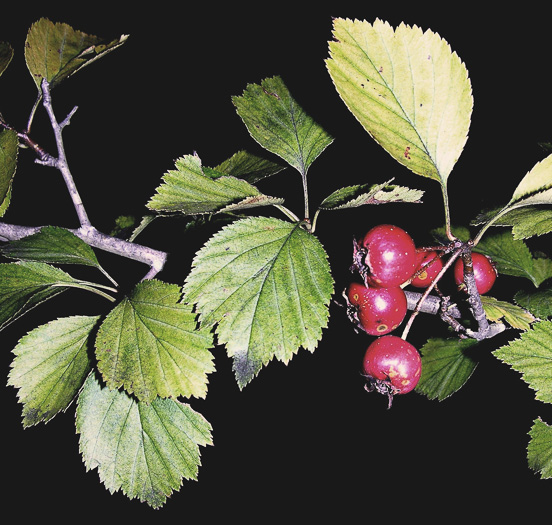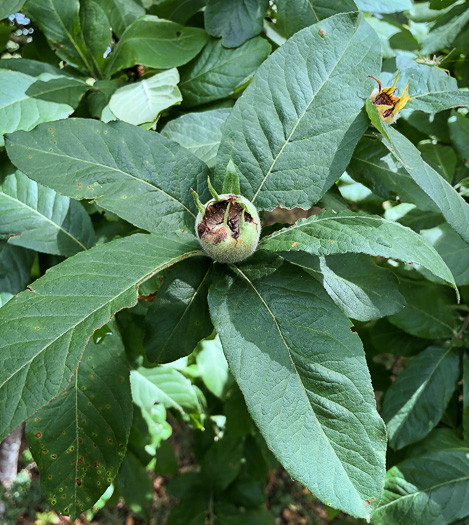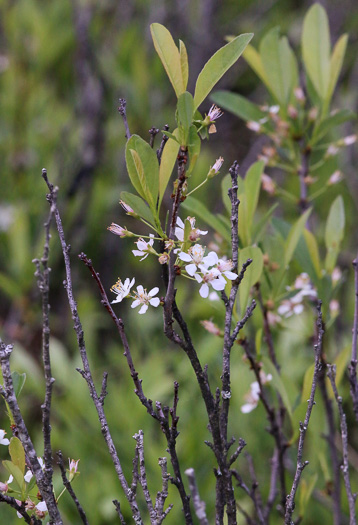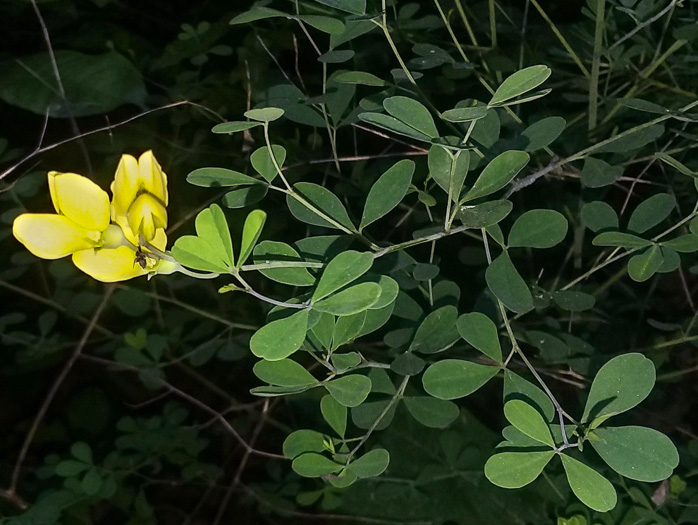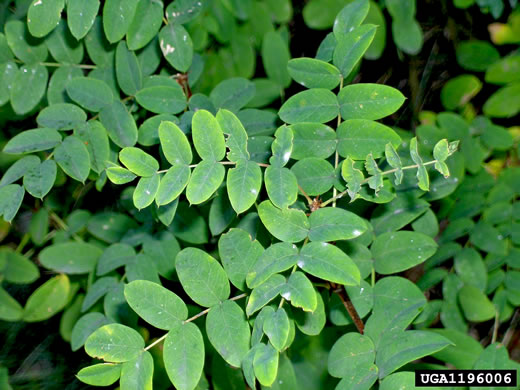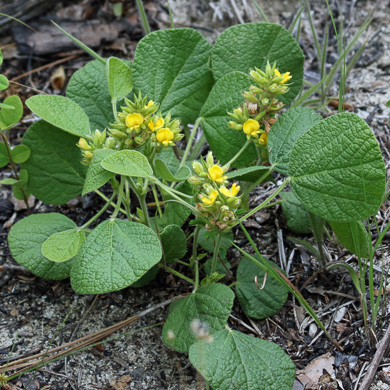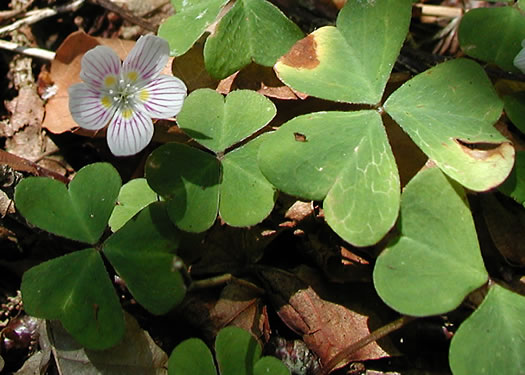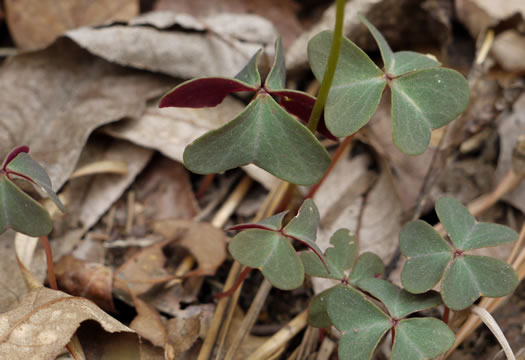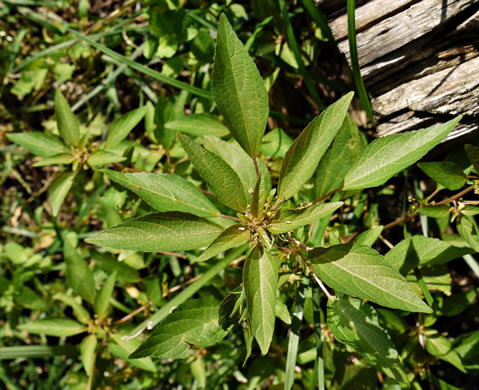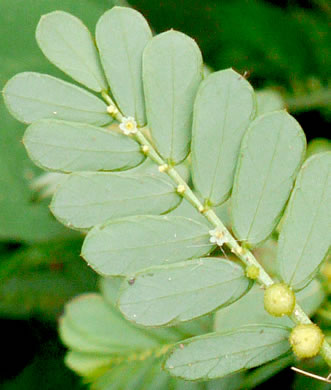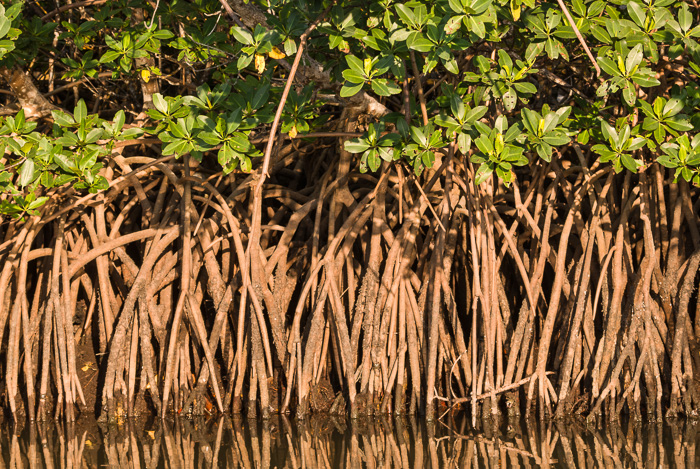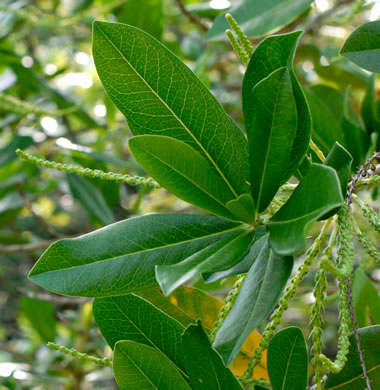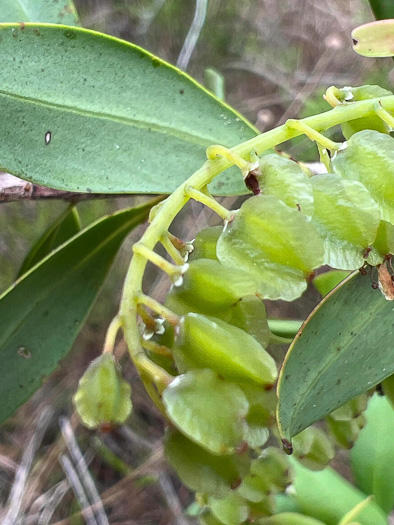Your search found 493 image(s) illustrating the term "blade." For a written explanation, click on "blade" in the Glossary.
PAGE 1 PAGE 2 PAGE 3 PAGE 4 PAGE 5 PAGE 6 PAGE 7 PAGE 8 PAGE 9
To see larger pictures, click or hover over the thumbnails.
To go to the plant's detail page, click its name.
 Common Pokeweed,
Phytolacca americana
Common Pokeweed,
Phytolacca americana
Leaf blades elliptic, ovate-elliptic, or ovate-lanceolate, per Aquatic and Wetland Plants of Southeastern United States (Godfrey & Wooten, 1979 & 1981).
 Small Sea-purslane,
Sesuvium maritimum
Small Sea-purslane,
Sesuvium maritimum
Plant succulent. Leaf blades spatulate to ovate, 1-2.5cm, bases tapering, per Flora of North America.
 Carolina Spring-beauty,
Claytonia caroliniana
Carolina Spring-beauty,
Claytonia caroliniana
Leaf blade 1.5-7cm x 1.5-3.5cm, clearly differentiated from the petiole, per Vascular Flora of the Carolinas (Radford, Ahles, & Bell, 1968).
 Panicled Fameflower,
Talinum paniculatum
Panicled Fameflower,
Talinum paniculatum
Leaves to 12 cm, blade elliptic to obovate, base attenuate, per Flora of North America.
 Menges' Fameflower,
Phemeranthus mengesii
Menges' Fameflower,
Phemeranthus mengesii
Stems more or less erect, usually branching. Leaves sessile; blade terete, per Flora of North America.
 Forked Chickweed,
Paronychia canadensis
Forked Chickweed,
Paronychia canadensis
Leaf blade usually dotted or blotched, elliptic to obovate, herbaceous, glabrous, per Flora of North America.
 Rose Campion,
Silene coronaria
Rose Campion,
Silene coronaria
Leaf blades with dense silky white hairiness, per Weakley's Flora (2020).
 Royal Catchfly,
Silene regia
Royal Catchfly,
Silene regia
Leaves sessile; blade 3-veined, lanceolate to ovate, rounded into base, per Flora of North America.
 Spatterdock,
Nuphar advena
Spatterdock,
Nuphar advena
Floating leaf blades 1-2x long as wide, the sinus > 1/4 as long as the midrib, per Weakley's Flora.
 Narrowleaf Pondlily,
Nuphar sagittifolia
Narrowleaf Pondlily,
Nuphar sagittifolia
Floating leaf blades 3-6x as long as wide, per Weakley's Flora.
 Yonkapin,
Nelumbo lutea
Yonkapin,
Nelumbo lutea
Leaf blades peltate, usually raised above the water, obicular, to 70cm wide, per Wildflowers of the Eastern United States (Duncan & Duncan, 1999).
 Water-shield,
Brasenia schreberi
Water-shield,
Brasenia schreberi
Leaf blades all floating, peltate, elliptic, not notched, per Wildflowers of the Eastern United States (Duncan & Duncan, 1999).
 Eastern Columbine,
Aquilegia canadensis
Eastern Columbine,
Aquilegia canadensis
The five petals have yellow blades and hollow red spurs that contain nectar, per Wildflowers of Tennessee (Carman, 2005).
 Leatherleaf Mahonia,
Mahonia bealei
Leatherleaf Mahonia,
Mahonia bealei
Leaflet blades with 2-7 teeth per side; leaflets very thick and stiff, per Weakley's Flora (2012).
 Creeping Oregon-grape,
Mahonia repens
Creeping Oregon-grape,
Mahonia repens
Leaflet blades thin & flexible, 1-3 veined from base; teeth 6-24 [per side], per Flora of North America.
 Twinleaf,
Jeffersonia diphylla
Twinleaf,
Jeffersonia diphylla
The two leaf blades are entire or toothed, per Wildflowers of the Eastern United States (Duncan & Duncan, 1999).
 Sweetbay,
Magnolia virginiana +
Sweetbay,
Magnolia virginiana +
Blades thin, leathery, narrowing toward both ends, silvery pubescent below, per Native Trees of the Southeast, An Identification Guide (Kirkman, Brown, & Leopold, 2007).
 Bigleaf Magnolia,
Magnolia macrophylla
Bigleaf Magnolia,
Magnolia macrophylla
Leaf blades heart-shaped or lobed at base, per Native Trees of the Southeast, An Identification Guide (Kirkman, Brown, & Leopold, 2007).
 Fraser Magnolia,
Magnolia fraseri
Fraser Magnolia,
Magnolia fraseri
Leaf blades 10-18" long, 5-8" wide, per Native Trees of the Southeast, An Identification Guide (Kirkman, Brown, & Leopold, 2007).
 Fraser Magnolia,
Magnolia fraseri
Fraser Magnolia,
Magnolia fraseri
Blades obovate to spatulate, conspicuously auriculate at the base, glabrous, per Native Trees of the Southeast, An Identification Guide (Kirkman, Brown, & Leopold, 2007).
 Common Pawpaw,
Asimina triloba
Common Pawpaw,
Asimina triloba
Leaf blades obovate, 6-12" long (generally larger than A. parviflora), per Native Trees of the Southeast, An Identification Guide (Kirkman, Brown, & Leopold, 2007).
 Netleaf Pawpaw,
Asimina reticulata
Netleaf Pawpaw,
Asimina reticulata
Fully emerged leaf blade narrowly obovate to oblong or elliptic, per Flora of North America.
 Florida Star-anise,
Illicium floridanum
Florida Star-anise,
Illicium floridanum
Leaves often crowded on twig ends; blades fleshy, leathery, elliptical, per Native Trees of the Southeast, An Identification Guide (Kirkman, Brown, & Leopold, 2007).
 Upland Redbay,
Tamala borbonia
Upland Redbay,
Tamala borbonia
Leaf blade leathery, elliptical to oblong, tapering at both ends, 2-8" long, per Native Trees of the Southeast, An Identification Guide (Kirkman, Brown, & Leopold, 2007).
 Swamp Redbay,
Tamala palustris
Swamp Redbay,
Tamala palustris
Leaf blade ovate to elliptic; leaf surface adaxially green, lustrous, per Flora of North America.
 Fumitory,
Fumaria officinalis
Fumitory,
Fumaria officinalis
Leaves compound; blade w 3-4 orders of leaflets and lobes, surfaces glabrous, per Flora of North America.
 Cleome,
Tarenaya houtteana
Cleome,
Tarenaya houtteana
Leaflets 5 or 7, blade elliptic to oblanceolate, margins serrulate-denticulate, apex acute, per Flora of North America.
 Yellow Pitcherplant,
Sarracenia flava
Yellow Pitcherplant,
Sarracenia flava
Blade of the hood broadly reniform to orbicular-reniform, broadly cordate basally, per Weakley's Flora (2022).
 Elf-orpine,
Diamorpha smallii
Elf-orpine,
Diamorpha smallii
Plants reddish, succulent. Leaves fleshy, blades obtuse & nearly circular, per Wildflowers of the Eastern United States (Duncan & Duncan, 1999).
 Roundleaf Sundew,
Drosera rotundifolia
Roundleaf Sundew,
Drosera rotundifolia
Leaf blades wider than long, suborbicular or reniform, per Weakley's Flora (2012).
 Water Sundew,
Drosera intermedia
Water Sundew,
Drosera intermedia
Leaf blades longer than wide, spatulate; petioles filiform, 2-6cm long, per Vascular Flora of the Carolinas (Radford, Ahles, & Bell, 1968).
 Pink Sundew,
Drosera capillaris
Pink Sundew,
Drosera capillaris
Leaves obovate to spatulate, petioles equal to or slightly longer than blades, per Vascular Flora of the Carolinas (Radford, Ahles, & Bell, 1968).
 Waterwheel-plant,
Aldrovanda vesiculosa
Waterwheel-plant,
Aldrovanda vesiculosa
Leaf whorls 1-2cm in diam., bristles extending slightly beyond leaf blade, per Flora of China.
 Venus Flytrap,
Dionaea muscipula
Venus Flytrap,
Dionaea muscipula
The hinged clamshell-like leaf blades are on relatively long winged stalks, per Atlantic Coastal Plain Wildflowers (Nelson, 2006).
 Virginia Sweetspire,
Itea virginica
Virginia Sweetspire,
Itea virginica
Leaf margins toothed throughout vs. Clethra alnifolia's only on upper blade, per Atlantic Coastal Plain Wildflowers (Nelson, 2006).
 Wild Black Currant,
Ribes americanum
Wild Black Currant,
Ribes americanum
Leaf blade 3-5 lobed, cleft nearly 1/2 to midrib. Surfaces w sessile glands, per Flora of North America.
 Bigleaf Grass-of-Parnassus,
Parnassia grandifolia
Bigleaf Grass-of-Parnassus,
Parnassia grandifolia
Leaves not forming large clonal patches; leaf blades ovate, longer than wide, per Weakley's Flora (2015).
 Mapleleaf Alumroot,
Heuchera villosa
Mapleleaf Alumroot,
Heuchera villosa
Both the lobes and the teeth of the leaf blades are sharp-pointed, per Wildflowers of the Southern Mountains (Smith, 1998).
 Brook Lettuce,
Micranthes micranthidifolia
Brook Lettuce,
Micranthes micranthidifolia
Blades of basal leaves sharply toothed, per Wildflowers of Tennessee (Carman, 2005).
 Carey's Saxifrage,
Micranthes careyana
Carey's Saxifrage,
Micranthes careyana
Leaves petiolate, the blade rather abruptly contracted to the petiole, per Weakley's Flora.
 Lance’s Hawthorn,
Crataegus lancei
Lance’s Hawthorn,
Crataegus lancei
Leaves often 3-lobed at apex, crenate-serrate beyond middle of blade, per Haws: A Guide to Hawthorns of the Southeastern US (Lance, 2014).
 Woolly Hawthorn,
Crataegus mollis var. lanuginosa
Woolly Hawthorn,
Crataegus mollis var. lanuginosa
Leaf blades mostly 3-5cm long, per Haws: A Guide to Hawthorns of the Southeastern US (Lance, 2014).
 Woolly Hawthorn,
Crataegus mollis var. lanuginosa
Woolly Hawthorn,
Crataegus mollis var. lanuginosa
Petioles eglandular. Leaf blades persistently pubescent abaxially, per Haws: A Guide to Hawthorns of the Southeastern US (Lance, 2014).
 Eastern Hawthorn,
Crataegus macrosperma
Eastern Hawthorn,
Crataegus macrosperma
Leaf blades ovate to deltate; lobes acute to acuminate, per Haws: A Guide to Hawthorns of the Southeastern US (Lance, 2014).
 Rome Hawthorn,
Crataegus aemula
Rome Hawthorn,
Crataegus aemula
Petioles mostly <1/3 length of blade. — Ron Lance
 European Medlar,
Crataegus germanica
European Medlar,
Crataegus germanica
Leaf blades mostly oblong-elliptic, unlobed; margins unlobed, per Haws: A Guide to Hawthorns of the Southeastern US (Lance, 2014).
 Susquehanna Cherry,
Prunus susquehanae
Susquehanna Cherry,
Prunus susquehanae
Youngest twigs minutely pubescent; leaf blades mostly 1.7-2.5x long as wide, per Weakley's Flora (2015).
 Choke Cherry,
Prunus virginiana var. virginiana
Choke Cherry,
Prunus virginiana var. virginiana
Flowers in racemes in leaf axils. Leaf blades elliptical to obovate, per Native Trees of the Southeast, An Identification Guide (Kirkman, Brown, & Leopold, 2007).
 a hybrid Wild Indigo,
Baptisia ×serenae
a hybrid Wild Indigo,
Baptisia ×serenae
Leaflets 1-3cm+; blades obovate, cuneate-obovate or spatulate-oblanceolate, per Manual of the Southeastern Flora (JK Small, 1933).
 Siberian Pea Shrub,
Caragana arborescens
Siberian Pea Shrub,
Caragana arborescens
Leaves pinnate, 8-16-foliolate; leaflet blades oblong-obovate to elliptic, per Flora of China.
 Dollarweed,
Rhynchosia reniformis
Dollarweed,
Rhynchosia reniformis
Leaf blades rounded to kidney-shaped, 2-5cm long and wide, long-stalked, per Wildflowers of the Sandhills Region (Sorrie, 2011).
 Mountain Wood-sorrel,
Oxalis montana
Mountain Wood-sorrel,
Oxalis montana
Leaves all basal and long-stalked, each blade with heart-shaped leaflets, per Wildflowers of Tennessee (Carman, 2005).
 Violet Wood-sorrel,
Oxalis violacea
Violet Wood-sorrel,
Oxalis violacea
Each leaf blade consists of 3 heart-shaped leaflets, per Wildflowers of Tennessee (Carman, 2005).
 Sadie Price’s Yellow Wood-sorrel,
Oxalis macrantha
Sadie Price’s Yellow Wood-sorrel,
Oxalis macrantha
Blades of the leaflets mostly 7-12mm wide, pubescent, per Manual of the Southeastern Flora (JK Small, 1933).
 Common Threeseed Mercury,
Acalypha rhomboidea
Common Threeseed Mercury,
Acalypha rhomboidea
Petioles of the larger leaves regularly more than half as long as blades, per Manual of Vascular Plants of NE US & Adjacent Canada (Gleason & Cronquist, 1991).
 Nettleleaf Noseburn,
Tragia urticifolia
Nettleleaf Noseburn,
Tragia urticifolia
Leaf blade triangular-lanceolate, base truncate to cordate, margins serrate, per Flora of North America.
 Chamber Bitter,
Emblica urinaria
Chamber Bitter,
Emblica urinaria
Leaf blade papery, abaxially gray-green or pale, or sometimes reddish tinged, per Flora of China.
 Red Mangrove,
Rhizophora mangle
Red Mangrove,
Rhizophora mangle
Adaxial surface of leaf blades shiny dark green with a conspicuous midvein, per Flora of North America.
 Titi,
Cyrilla racemiflora
Titi,
Cyrilla racemiflora
Leaf blades leathery, narrowly obovate to oblanceolate, glabrous, entire, per Native Trees of the Southeast, An Identification Guide (Kirkman, Brown, & Leopold, 2007).
 Buckwheat-tree,
Cliftonia monophylla
Buckwheat-tree,
Cliftonia monophylla
Lateral veins of the leaf blades scarcely or not at all apparent on either surface, per Weakley's Flora (2022).

